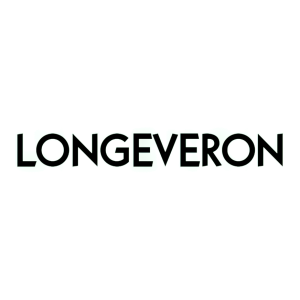Longeveron Issues Letter to Shareholders Highlighting Corporate Strategy, Clinical Pipeline and 2024 Key Priorities and Goals
MIAMI, April 08, 2024 (GLOBE NEWSWIRE) -- Longeveron Inc. (NASDAQ: LGVN), a clinical stage biotechnology company developing regenerative medicines, today announced that the Company’s CEO, Wa’el Hashad, issued the following letter to Longeveron shareholders.
Dear Shareholders,
I am delighted to mark my first anniversary as CEO of Longeveron this month. It has been an extraordinary journey thus far, and I am immensely grateful for the opportunity to lead such a pioneering organization dedicated to transforming healthcare through innovations in regenerative medicine.
Upon joining Longeveron, I set out with a clear objective: to develop a strategic roadmap building on the strength of our science while acknowledging the realities of the capital market environment. Longeveron's foundation in cutting-edge cellular therapy research, coupled with the promise of Lomecel-BTM, positions us to profoundly impact patients’ lives for the better by addressing numerous unmet medical needs with U.S. market potential opportunities of up to approximately
Today, I am excited to update you on our overall strategy, business objectives, approach to capital allocation, and 2024 key priorities and goals.
Strategic Overview:
Our focus remains steadfast on raising the funds necessary to continue our operations and delivering transformative solutions to patients and creating sustainable value for our shareholders.
Our lead investigational product is Lomecel-B™, which is derived from culture-expanded medicinal signaling cells (MSCs) that are sourced from bone marrow of young healthy adult donors. We believe that by using the same cells that promote tissue repair, organ maintenance, and immune system function, we can develop safe and effective therapies for some of the most difficult diseases and conditions.
In 2024, we are focusing our efforts on two of our most promising programs: Hypoplastic Left Heart Syndrome (HLHS); and Alzheimer’s Disease.
HLHS:
HLHS is a rare pediatric disease affecting approximately 1000 live births per year in the US. The results of our successful Phase 1 trial showed
At present, we have completed approximately
Alzheimer’s Disease:
In our Alzheimer’s Disease (AD) program, we recently completed our Phase 2a CLEAR-MIND trial with 49 patients that builds upon our successful Phase 1 trial. The results of our CLEAR MIND trial provided encouraging signals of efficacy that clearly warrant further investigation.
As such, we are aggressively pursuing partnerships and funding opportunities to move this exciting program forward. Given the massive unmet need presented by AD, large resources are potentially available from federal and private funding sources. We will be heavily focused on seeking partnership opportunities and/or non-dilutive funding for this program.
Our Core Business Objectives:
- Focus on HLHS as the Main Value Driver:
- We endeavored to strategically position our Phase 2 study for HLHS as a pivotal head-to-head study, with potential for accelerated or full FDA approval, reflecting our commitment to expedite treatment access.
- We plan to leverage existing relationships with several treating surgeons in order to maximize our commercialization planning and potential future launch in HLHS.
- Recognizing substantial revenue potential from worldwide commercialization, we anticipate capitalizing on recent rare disease pricing trends and the unique aspects of our treatment.
- With in-house manufacturing capacity adequate to meet anticipated global supply demands, we expect that scale-up expenses for commercialization of this indication will be substantially reduced.
- Possession of a Rare Pediatric Disease priority review voucher associated with HLHS upon successful FDA approval could have significant monetary value and further enhance our product’s value proposition upon approval.
- HLHS Commercialization and BLA Readiness:
- In 2024, there will be increased efforts and focus on organizational readiness for potential BLA filing for HLHS in 2026. These efforts are expected to include strengthening processes, conducting mock audits, and enhancing regulatory interactions which are paramount to expedite BLA readiness and ensure compliance.
- Strategic Collaborations:
- While Alzheimer’s Disease programs hold immense potential, their larger-scale studies and commercialization requirements due to the large size of the affected population necessitate significant investment, prompting our focus on potential strategic partnerships with biotech/pharmaceutical companies or pursuit of grants and other non-dilutive funding sources.
- Our openness to collaborations with public and private organizations aligns with our mission of advancing therapies across various therapeutic areas.
- Leveraging Science and Manufacturing Capabilities:
- With our significant manufacturing capabilities and expertise, we intend to capitalize on these assets to provide greater strategic diversification and generate additional revenue by further soliciting and engaging in contract development and manufacturing services (CDMO) for third parties.
- We plan to continue investment in new products and technologies supportive of innovation and potency assay development and fostering long-term competitiveness and product differentiation.
- Efficient Resource Management:
- We plan to continue pursuing strategic advancement as much as possible without increasing headcount in order to maximize efficiency and alignment with strategic priorities.
- Our termination of the Japan Aging-related Frailty study reallocates resources to our priority programs in order to optimize resource utilization and ensure strategic focus.
These priorities underscore our commitment to delivering value to patients and shareholders alike, and to continue our pursuit of sustainable growth and impact in the healthcare landscape.
Financial Position and Capital Strategy:
Longeveron is working diligently to effectively manage expenses and reduce ongoing costs through strategic initiatives such as terminating the Aging-related Frailty study in Japan, making related staff reductions, and leveraging revenue-generating activities like contract development and manufacturing services (CDMO). However, there is a critical need for additional capital to achieve our business strategy and objectives. The development of pharmaceutical drugs is capital intensive and our current cash resources are insufficient to fund our planned operations or development plans beyond the beginning of the second quarter of 2024. Our ability to continue to execute the plans discussed above is contingent upon the Company obtaining financing, and unless the Company obtains sufficient financing, the Company will have to cut back on their plans discussed in this letter.
To help facilitate securing additional capital, we recently effected a reverse stock split and filed a registration statement with the Securities and Exchange Commission.
The following principles underscore our commitment to responsible financial stewardship:
- Long Term Investor Engagement: We are seeking stable investors committed to our work and strategy, fostering long-term partnerships aligned with our vision.
- Debt Financing Prudence: We are presently avoiding debt financing to minimize financial risk and optimize capital structure.
- Priority-Aligned Capital Allocation: We are working diligently to be prudent stewards of cash and allocating it to the organization’s top priorities to effectuate optimal resource utilization and alignment with strategic objectives.
2024 Goals and Priorities
Our goals for 2024 center on executing our business objectives with speed, efficiency, and quality. The primary operational goal is to fully enroll our ELPIS II Phase 2 study for HLHS by the end of the year. To achieve this goal, we are implementing the following strategies:
- Site Optimization: We plan to close non-enrolling sites and add new high-potential sites to accelerate enrollment, leveraging, whenever possible, prestigious academic institutions in this field.
- Investigator Meeting: We intend to conduct an investigator meeting in May with the goal of expediting onboarding of new sites and reenergizing existing sites to meet study completion targets.
- Advocacy Group Partnership: We expect to further partner with advocacy groups to raise awareness about our clinical program among families of prospective patients, fostering community engagement and support.
Additionally, we plan to meet with the FDA to ensure alignment on our regulatory path forward. We also anticipate completion of the 5-year follow-up from our Phase 1 HLHS study by the second half of 2024 which, if we continue to have similar results, may allow us to announce additional favorable results on continued transplant-free survival. Furthermore, we plan to present data from our Phase 2a CLEAR-MIND Study in Mild Alzheimer’s Disease patients at various scientific conferences and submit our findings for publication.
Conclusion
Longeveron has achieved significant operational and strategic advancements over the past 12 months, delivering promising results for conditions that profoundly impact patients and caregivers. With Lomecel-BTM’s documented safety profile in clinical trials in vulnerable populations and its effects assessed in nearly 500 patients across various indications, we are optimistic about the potential for our drug candidate. We remain committed to executing against our strategic and operational goals with speed, quality, and efficiency. By leveraging our available resources wisely and improving our balance sheet, we are focused on bringing Lomecel-BTM to market to address the needs of patients suffering from these devastating conditions.
We deeply appreciate the support of our stakeholders over the years and look forward to continued collaboration and progress in the future.
Sincerely,
Wa’el Hashad
CEO, Longeveron
Forward-Looking Statements
Certain statements in this letter that are not historical facts are forward-looking statements made pursuant to the safe harbor provisions of the Private Securities Litigation Reform Act of 1995, which reflect management’s current expectations, assumptions, and estimates of future operations, performance and economic conditions, and involve risks and uncertainties that could cause actual results to differ materially from those anticipated by the statements made herein. Forward-looking statements are generally identifiable by the use of forward-looking terminology such as “believe,” “expects,” “may,” “looks to,” “will,” “should,” “plan,” “intend,” “on condition,” “target,” “see,” “potential,” “estimates,” “preliminary,” or “anticipates” or the negative thereof or comparable terminology, or by discussion of strategy or goals or other future events, circumstances, or effects. Factors that could cause actual results to differ materially from those expressed or implied in any forward-looking statements in this release include, but are not limited to, our limited operating history and lack of products approved for commercial sale; adverse global conditions, including macroeconomic uncertainty; inability to raise additional capital necessary to continue as a going concern; our history of losses and inability to achieve profitability going forward; the absence of FDA-approved allogenic, cell-based therapies for Aging-related Frailty, AD, or other aging-related conditions, or for HLHS or other cardiac-related indications; ethical and other concerns surrounding the use of stem cell therapy or human tissue; our exposure to product liability claims arising from the use of our product candidates or future products in individuals, for which we may not be able to obtain adequate product liability insurance; the adequacy of our trade secret and patent position to protect our product candidates and their uses: others could compete against us more directly, which could harm our business and have a material adverse effect on our business, financial condition, and results of operations; if certain license agreements are terminated, our ability to continue clinical trials and commercially market products could be adversely affected; the inability to protect the confidentiality of our proprietary information, trade secrets, and know-how; third-party claims of intellectual property infringement may prevent or delay our product development efforts; intellectual property rights do not necessarily address all potential threats to our competitive advantage; the inability to successfully develop and commercialize our product candidates and obtain the necessary regulatory approvals; we cannot market and sell our product candidates in the U.S. or in other countries if we fail to obtain the necessary regulatory approvals; final marketing approval of our product candidates by the FDA or other regulatory authorities for commercial use may be delayed, limited, or denied, any of which could adversely affect our ability to generate operating revenues; we may not be able to secure and maintain research institutions to conduct our clinical trials; ongoing healthcare legislative and regulatory reform measures may have a material adverse effect on our business and results of operations; if we receive regulatory approval of Lomecel-B™ or any of our other product candidates, we will be subject to ongoing regulatory requirements and continued regulatory review, which may result in significant additional expense; being subject to penalties if we fail to comply with regulatory requirements or experience unanticipated problems with our therapeutic candidates; reliance on third parties to conduct certain aspects of our preclinical studies and clinical trials; interim, “topline” and preliminary data from our clinical trials that we announce or publish from time to time may change as more data become available and are subject to audit and verification procedures that could result in material changes in the final data; the volatility of price of our Class A common stock; we could lose our listing on the Nasdaq Capital Market; provisions in our certificate of incorporation and bylaws and Delaware law might discourage, delay or prevent a change in control of our company or changes in our management and, therefore, depress the market price of our Class A common stock; we have never commercialized a product candidate before and may lack the necessary expertise, personnel and resources to successfully commercialize any products on our own or together with suitable collaborators; and in order to successfully implement our plans and strategies, we will need to grow our organization, and we may experience difficulties in managing this growth. Further information relating to factors that may impact the Company’s results and forward-looking statements are disclosed in the Company’s filings with the Securities and Exchange Commission, including Longeveron’s Annual Report on Form 10-K for the year ended December 31, 2023, filed with the Securities and Exchange Commission on February 27, 2024, as amended by the Annual Report on Form 10-K/A filed March 11, 2024, its Quarterly Reports on Form 10-Q, and its Current Reports on Form 8-K. The forward-looking statements contained in this letter are made as of the date of this press release, and the Company disclaims any intention or obligation, other than imposed by law, to update or revise any forward-looking statements, whether as a result of new information, future events, or otherwise.
Investor Contact
Derek Cole
Investor Relations Advisory Solutions
derek.cole@iradvisory.com









